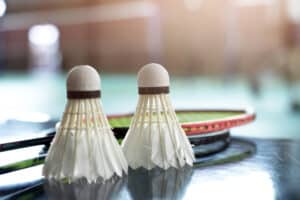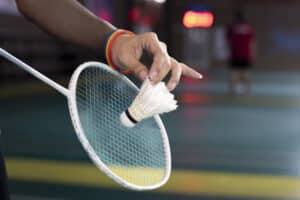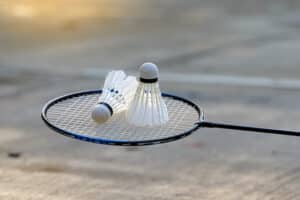What are the Rules of Cornhole?
Key Takeaways
- The official dimensions of a cornhole board are 47½ to 48 inches in length and 23½ to 24 inches in width.
- A cornhole court should be a level rectangular area that is 8-10 feet wide and a minimum of 40-45 feet long.
- Scoring in cornhole is done using “cancellation” scoring, where a bag on the board is worth one point and a bag in the hole is worth three points.
Cornhole, also known as bean bag toss, is a popular outdoor game that has gained immense popularity in recent years. The game involves tossing bags filled with corn or plastic pellets onto a raised platform with a hole in it. The objective is to score points by getting the bags either in the hole or on the board. In this article, we will explore the official rules of cornhole and provide you with a comprehensive understanding of how to play the game.
Equipment and Dimensions
Before we dive into the rules, let’s familiarize ourselves with the equipment and dimensions of a cornhole game. The official dimensions of a cornhole board, as specified by the American Cornhole Association (ACA), are 47½ to 48 inches in length and 23½ to 24 inches in width. The board should be made of smooth plywood that is at least ½-inch thick. It is important that the surface of the board is sanded to a very smooth texture.
The hole in the cornhole board should be 6 inches in diameter and centered 9 inches from the top and 12 inches from each side. The cornhole bags used in the game are made from two fabric squares measuring 6¼” x 6¼” with a ¼-inch stitched seam on all four sides. Each bag should be filled with approximately 2 cups of feed corn or plastic pellets and weigh between 14-16 ounces.
Court Layout
A cornhole court should be a level rectangular area that is 8-10 feet wide and a minimum of 40-45 feet long. The two cornhole boards are placed 27 feet apart from front edge to front edge. The court should also have designated pitcher’s boxes and foul lines. The pitcher’s box is a rectangle measuring 4 feet by 3 feet located at each end of the court. Players must remain within the pitcher’s box while pitching a cornhole bag.
There are two sets of foul lines: open adult-play foul lines and junior-play foul lines. The open adult-play foul lines are an imaginary line 27 feet between the front of each board. On the other hand, the junior-play foul lines, designed for children 12 and under, are an imaginary line that ranges from 12-15 feet between the front of each board.
Gameplay and Scoring
Cornhole is typically played in innings, with each player or team taking turns pitching all four of their bags in an inning. Scoring in cornhole is done using “cancellation” scoring, where one player’s points cancel out their opponent’s points. The following scoring system is used:
- Bag In-The-Count (Woody): When a bag lands on the board, it is worth one point.
- Bag In-The-Hole (Cornhole): When a bag goes into the hole, it is worth three points.
- Foul Bags: Bags that do not land on the board, slide off the board, or touch the ground before coming to a stop on the board are considered foul bags and are not counted in the scoring.
The player or team who scored in the preceding inning has the honor of pitching first in the next inning. The game is played to a predetermined number of points, typically 21 points. The first player or team to reach or exceed that amount at the conclusion of an inning is declared the winner.
Foul Bag Rules
There are certain rules and regulations related to foul bags in cornhole. If a player commits a rule violation, such as crossing the foul line or pitching from a different pitcher’s box, it results in a foul bag. In such cases, the bags that have been thrown are removed from the court and do not count for any points. It is important to adhere to the foul bag rules to ensure fair play and maintain the integrity of the game.
Tips for Playing Cornhole
While the official rules of cornhole provide the framework for the game, there are also some tips and strategies that can enhance your playing experience. Here are a few tips to keep in mind:
- Play on a soft surface like grass or sand to minimize bounce.
- Wipe the moisture off the boards to ensure proper bag grip.
- Consider the strategy of throwing the bag sticky-side down or slick-side down based on the conditions.
- Try to spin the bag like a Frisbee to add accuracy and control.
- Watch videos of professional play to learn new techniques and improve your skills.
- Practice regularly to develop consistency and accuracy in your throws.
Conclusion
Cornhole is a fun and engaging outdoor game that can be enjoyed by people of all ages. By understanding and following the official rules of cornhole, you can ensure a fair and competitive playing experience. Remember to practice regularly, experiment with different techniques, and most importantly, have fun while playing the game.
Related Websites:
FAQs:
Q: What is cornhole and why is it popular as a social game?
Cornhole is a popular social game that involves throwing bean bags into small holes on a raised platform. It is enjoyed at parties, tailgates, and backyard gatherings, providing a fun activity for people of all ages to socialize and compete in a friendly manner.
Q: What is the objective of cornhole and how is it played?
The objective of cornhole is to score points by tossing bean bags onto the opposing board and aiming to get them through the small hole. Players take turns throwing bags, and the team with the most points at the end of the game wins.
Q: What equipment is used in cornhole?
Cornhole requires two cornhole boards and eight bean bags. The boards are raised platforms with a hole at one end, and the bean bags are filled with corn or synthetic materials. Quality cornhole boards and weather-resistant bean bags are recommended for optimal gameplay.
Q: What are the different types of throws in cornhole?
In cornhole, there are three main types of throws: the “ace,” which lands directly in the hole; the “woodie,” which lands on the board without going through the hole; and the “bagger,” which goes through the hole after hitting the board. Each throw carries different point values.
Q: How can beginners improve their cornhole skills?
To improve cornhole skills, beginners should focus on proper throwing technique, such as a smooth release and consistent follow-through. Aiming and accuracy can be enhanced through practice and adopting strategies like finding a consistent stance and visualizing the target. Engaging in practice drills, such as aiming for specific zones on the board, can also help enhance overall gameplay.






